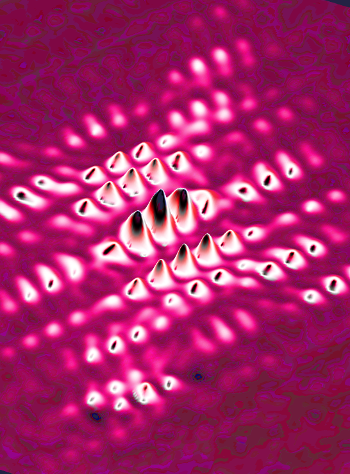Quantum twin problem tested
 Queensland researchers have devised a new experiment linking an Einstein-devised paradox to quantum mechanics.
Queensland researchers have devised a new experiment linking an Einstein-devised paradox to quantum mechanics.
The project will test Einstein’s twin paradox using quantum particles in a ‘superposition’ state.
“The twin paradox is one of the most counterintuitive predictions of relativity theory,” said University of Queensland physicist Dr Magdalena Zych.
“It says that time can pass at different speeds for people at different distances to an enormous mass or travelling with different velocities.
“For example, relative to a reference clock far from any massive object, a clock closer to a mass or moving at high speed will tick slower.
“This creates a ‘twin paradox’, where one of a pair of twins departs on a fast-speed journey while the other stays behind.
“When the twins reunite, the travelling twin would be much younger, as different amounts of time have passed for each of them.
“It’s a mind-blowing effect – featured in popular movies like Interstellar – but it’s also been verified by real world experiments, and is even taken into consideration in order for everyday GPS technology to work.”
A team including researchers from the University of Ulm and Leibniz University Hannover has found it is possible to use advanced laser technology to realise a quantum version of the Einstein’s twin paradox.
In the quantum version, rather than twins there will be only one particle travelling in a quantum superposition.
“A quantum superposition means the particle is in two locations at the same time, in each of them with some probability, and yet this is different to placing the particle in one or the other location randomly,” Dr Zych said.
“It’s another way for an object to exist, only allowed by the laws of quantum physics.
“The idea is to put one particle in superposition on two trajectories with different speeds, and see if a different amount of time passes for each of them, as in the twin paradox.
“If our understanding of quantum theory and relativity is right, when the superposed trajectories meet, the quantum traveller will be in superposition of being older and younger than itself.
“This would leave an unmistakeable signature in the results of the experiment, and that’s what we hope will be found when the experiment is realised in the future.
“It could lead to advanced technologies that will allow physicists to build more precise sensors and clocks – potentially, a key part of future navigation systems, autonomous vehicles and earthquake early-warning networks.”
The experiment itself will also answer some open questions in modern physics.
“A key example is, can time display quantum behaviour or is it fundamentally classical?” Dr Zych said.
“This question is likely crucial for the ‘holy grail’ of theoretical physics: finding a joint theory of quantum and gravitational phenomena.
“We’re looking forward to helping answer this question, and tackling many more.”








 Print
Print